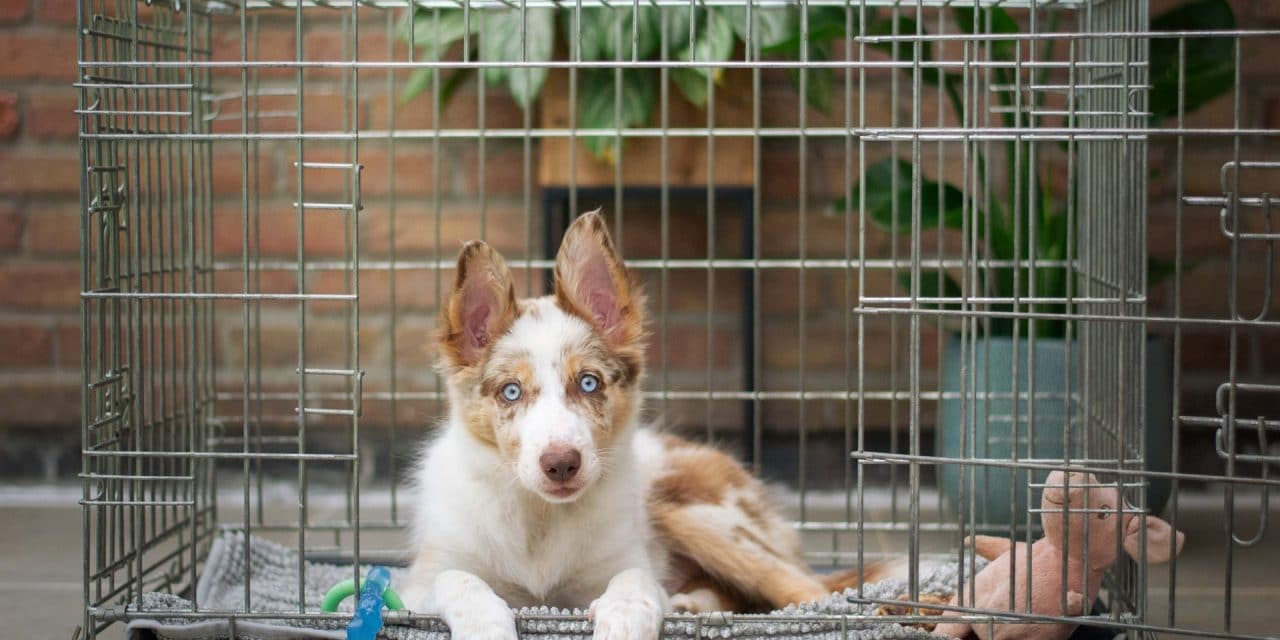Crating a dog is one of the most polarizing topics when it comes to dog parenting. Institutions like PETA feel that a crate is a cage for the dog. According to the animal welfare organization, crates are just a way to ignore and warehouse dogs until the dog parent finally can make time for them. However, it’s not the absolute truth.
Dog trainers and behavioral experts believe that crating a dog is an effective tool to train when it is done right. It stems from the fact that dogs are known for their love of snuggling in small and dark spaces in their downtime. And at times, it can also be your dog’s safe place when the surrounding environment becomes overwhelming for them. It can happen when you have guests over or when loud fireworks are happening in the neighborhood.
Crate training can be a boon for both the dog and the dog parent. It makes the dog comfortable with a crate, which comes in handy when you are traveling. However, the key is to know how to do it right, what to put in a puppy crate, and more. With the right incentives and correct things in the crate, like its favorite toy, your dog will consider it a second home in no time.
If you are bringing home a new puppy and wondering how to get started with crating, you are in the right place. Here’s a detailed guide on how to crate train your dog or puppy efficiently.
Select a Proper Crate
When selecting a crate for your puppy, make sure that it is just the right size for your dog. To do this, measure your dog’s height and length, then add 4 inches to each. However, this is for an adult dog. If you are buying the crate for a new puppy and plan to keep it for a long time, consider the average measurements of your dog’s breed for the crate.
Next up, decide the material of your dog’s crate. There are several dog crates available in the market. However, metal wired and plastic crates are two of the most common ones. The former offers maximum ventilation, security, and portability. These crates can be folded for easy storage and are also easier to clean. The plastic crates are made of a poly-blend with a chrome-plated metal bar door. These are airline travel approved and are more suited for traveling.
Introduce Your Puppy to the Crate
One of the best ways to introduce your dog to the crate is by using positive reinforcement training. Place the crate in a location where the family spends a lot of time together, like the hall. Make sure that the crate is comfortable by putting a soft blanket in the crate. Bring your dog close to the crate and talk to them in a happy tone of voice.
To encourage your dog to enter the crate, drop its favorite treats from just outside the crate door to deep inside. Most dogs will refuse to enter the crate at first, and that’s normal. Don’t force them to enter the crate under any condition. Continue dropping favorite treats or toys in the crate until your dog walks calmly into the crate. This process may take anywhere from hours to days.
Feed our Dog in the Crate
Once you have successfully introduced your dog to the crate, start feeding near the crate to build a positive association. If your dog is already readily entering the crate to take treats, start by putting the food bowl in the back. If it is uncomfortable or anxious while entering the crate, put the bowl only as far inside as it can readily go. Gradually start putting the food further in with each meal.
Once the dog or puppy is comfortable eating in the crate, you can start closing the door while it is eating. Initially, open the door as soon as the dog is done eating the meal. Gradually, increase the time to keep the door locked. Your dog may whine a little at first but do not give in because otherwise, the dog will learn this is the way to get out of the crate and keep doing it.
Condition Your Dog to Stay Longer in the Crate
The next step is to start conditioning your dog to stay in the crate. Once your dog is comfortable with the crate, you can start crating him for a shorter period when you are at home. Call your dog to the crate, point inside the crate with the treat in hand, and once it goes in, praise, give the treat and close the door.
Sit near the crate with your dog for 10 minutes, go out of sight for some time, come back and sit for a bit, and let your dog out of the crate. Repeat this process several times and increase the length of the time with each repetition. Once your dog stays in the crate for 30 minutes or more without making a noise, that’s when it’s ready to spend more time in the crate.
These are the most effective tips to start crate training your dog. Remember you must not force your dog to go in the crate if it doesn’t like to. It takes a considerable amount of time for your dog to get familiar with the crate, and you must be patient.














